1. “Black Dog” by Led Zeppelin
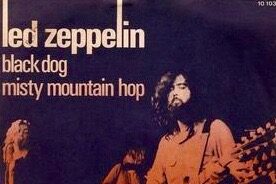
The iconic rock band Led Zeppelin created one of their most famous songs, “Black Dog,” in 1971. While many fans believe the song is about a love interest, the real inspiration came from a stray dog that roamed the band’s studio in the English countryside, according to Far Out Magazine. The dog, which was black in color, would often wander around as the band jammed, sparking the idea for the song’s title. The dog’s erratic behavior and its constant presence became a metaphor for the complicated, elusive nature of romantic relationships, as expressed in the lyrics. Interestingly, the song was originally titled “The Dog,” but it was changed to “Black Dog” to give it more intrigue and resonance.
Despite being inspired by a real dog, the song’s lyrics aren’t directly about the animal itself. Instead, they use the metaphor of the dog to convey feelings of longing, uncertainty, and emotional conflict, which became a hallmark of Led Zeppelin’s music. It’s fascinating to think that a simple stray dog could lead to one of rock music’s most memorable and enigmatic songs. Over time, the track has become a fan favorite, and the band often performed it with great energy, with the mysterious dog serving as a quirky yet meaningful origin story behind the iconic track.
2. “The Lion Sleeps Tonight” by The Tokens
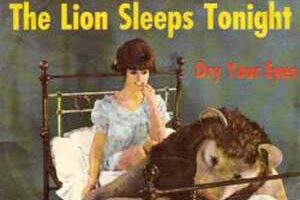
This song, originally written by Solomon Linda in 1939 under the title “Mbube,” has a fascinating backstory tied to both the animal and the history of the song itself. “The Lion Sleeps Tonight” became an international hit after being adapted and covered by various artists, most famously by The Tokens in 1961. According to Wikipedia, the song’s origins lie in South Africa, where Solomon Linda, a Zulu singer, composed it to tell the story of a lion’s life and the serenity of the animal’s nighttime rest. The original lyrics were in Zulu and focused more on the reverence of the lion, a symbol of power and majesty in African culture.
The English version, however, changed the lyrics to focus on the notion of a lion peacefully sleeping under the moonlight, making it a more universally appealing song. Despite its commercial success, the song’s complicated legal history surrounding royalties and copyright issues has overshadowed its success in recent years. Linda’s family fought for recognition and payment for the original composition, bringing attention to how the song was transformed and how much of its roots were tied to the real-life animal, the lion. Today, “The Lion Sleeps Tonight” remains a beloved classic, and its connection to both the lion and Linda’s cultural background keeps the song’s legacy alive.
3. “Free Bird” by Lynyrd Skynyrd

Lynyrd Skynyrd’s “Free Bird” is one of the most famous rock anthems of all time, and while it may seem like a simple song about freedom, the inspiration comes from a very real bird. The title “Free Bird” was chosen as a metaphor for the idea of freedom, symbolizing a bird flying freely in the sky, according to Louder Sound. However, the song’s lyrics were inspired by the idea of a person leaving behind someone they loved, a feeling of wanting to be free from commitments. According to band members, the bird represents the freedom of living life on one’s own terms, much like a bird flying away with no restrictions.
The real connection to the bird is seen in the soaring guitar solos and the lyrical idea of flight, which captures the freedom and independence the band members felt at the time. While the bird itself may not be mentioned in the lyrics beyond the title, the connection to the idea of a free spirit and unchained life remains a central theme. “Free Bird” remains a timeless classic, often played at concerts as the ultimate tribute to the power of freedom and individuality, as inspired by the image of a bird flying freely.
4. “I Am the Walrus” by The Beatles
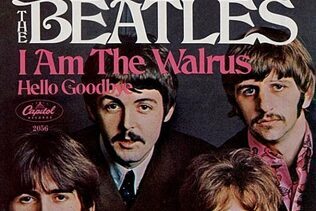
“I Am the Walrus” by The Beatles is a surreal and eccentric song that has puzzled listeners for years. Written by John Lennon in 1967, it was part of the band’s “Magical Mystery Tour” album. The inspiration behind the song’s title came from the Lewis Carroll poem “The Walrus and the Carpenter” from Through the Looking Glass and What Alice Found There, which Lennon read while writing the song, according to Wikipedia. The walrus in the poem symbolizes a character who lures innocent oysters to their doom, which became an apt metaphor for the absurdity and chaos that surrounded the band at the time.
Interestingly, the connection between the actual animal and the song is more symbolic than literal. Lennon’s choice of a walrus as a character was influenced by his interpretation of the poem, and he didn’t initially see the walrus as a direct representation of himself or the band. However, over time, fans have speculated that the walrus could represent both a playful and dark symbol of the band’s surreal experiences during the 1960s, when they were at the height of their fame. The song’s mysterious lyrics and experimental production made it an iconic piece of music history, with the walrus forever tied to the psychedelic era.
5. “Crocodile Rock” by Elton John

Elton John’s “Crocodile Rock” is a lively, nostalgic song from his 1972 album Don’t Shoot Me, I’m Only the Piano Player. While it doesn’t directly tell the story of a crocodile, the song was inspired by a childhood memory of John’s, mixing the imagery of the “crocodile” with a sense of rebelliousness and fun. The song’s upbeat tempo and catchy chorus evoke feelings of youth, joy, and freedom, much like the playful image of a crocodile rocking to music, according to Far Out Mgazine. The titular “crocodile” serves more as a metaphor for energy and exuberance, reflecting the vibrant atmosphere of the 1950s rock and roll era.
The song also reflects John’s love for 1950s music, especially the rock and roll sounds that he grew up listening to. The term “Crocodile Rock” itself is a playful creation; as John has said, it was a reference to the way the music made him feel, jumping and moving with excitement. While the song is not a literal reflection of a crocodile, the playful, carefree vibe of the animal parallels the fun-filled energy of the track. “Crocodile Rock” became one of Elton John’s signature songs and remains a beloved anthem to this day.
6. “The Fox (What Does the Fox Say?)” by Ylvis

Norwegian comedy duo Ylvis took the world by storm in 2013 with their viral hit “The Fox (What Does the Fox Say?).” The song humorously explores the question of what sound a fox makes, a question that most people haven’t given much thought to before. The catchy electronic beat and absurd lyrics became an instant sensation, and though it was created as a joke, it brought attention to the often-overlooked sounds that animals make. The song became a pop culture phenomenon and was even used in various meme formats.
The inspiration behind the song came from curiosity about the fox’s vocalizations, which are far less familiar than those of more common animals like dogs or cats. Ylvis, known for their offbeat and satirical humor, used the fox’s elusive and mysterious nature as a jumping-off point for their eccentric lyrics. In real life, foxes make a variety of sounds, including screams and barks, which Ylvis exaggerated in their song to create a comedic and absurd effect. The success of “The Fox” turned an obscure animal question into one of the most talked-about viral songs of the year.
Click here for more stories like this
7. “Rock Lobster” by The B-52’s
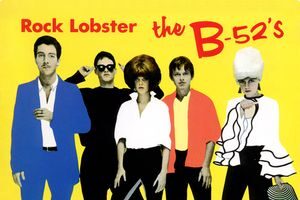
“Rock Lobster” by The B-52’s is a quirky and fun song released in 1978. The song’s lyrics tell a bizarre story about a rock lobster, an imaginary creature that seems to be more a product of the band’s playful imagination than a real animal. The song’s vivid, surreal imagery is characteristic of The B-52’s style, blending 1960s pop culture references with absurd humor. The rock lobster itself, while not a real creature, is an exaggeration of the common lobster, known for its hard shell and marine lifestyle.
The song was inspired by the band’s own experiences at the beach and their love for eccentric imagery. While the lobster in the song isn’t necessarily a direct reflection of the animal in nature, it represents the kind of offbeat creativity that the B-52’s are known for. The combination of surf-rock sounds and silly lyrics made “Rock Lobster” an unforgettable track that’s still remembered for its unique take on both the animal world and the world of pop music.
8. “Eye of the Tiger” by Survivor
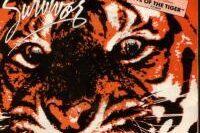
“Eye of the Tiger” by Survivor is one of the most iconic anthems of the 1980s, largely known for its association with the Rocky III movie. The song was written as a motivational track, with the “eye of the tiger” symbolizing determination, strength, and focus. While the tiger isn’t explicitly described in the lyrics, the idea of the “eye” captures the essence of the animal’s predatory nature, suggesting sharp focus and the will to overcome obstacles.
The band was inspired by the powerful image of a tiger, which is often used as a symbol of resilience and ferocity. The song’s driving beat and intense lyrics perfectly mirror the ferocity of the animal, making it a fitting soundtrack for the underdog story portrayed in Rocky III. “Eye of the Tiger” became synonymous with overcoming adversity and has remained a popular motivational anthem for decades. It’s amazing to think that a song so closely tied to an animal’s fierce nature has become such a symbol of personal strength and perseverance.
9. “Bungle in the Jungle” by Jethro Tull

“Bungle in the Jungle,” released by Jethro Tull in 1974, is a song that uses the imagery of jungle animals to reflect on the chaotic nature of life. The song’s lyrics, featuring a variety of animals such as monkeys, giraffes, and elephants, were written by band leader Ian Anderson. He crafted a satirical commentary on the struggles and absurdities of human existence, with the jungle serving as a metaphor for the societal and political challenges of the time.
The animals mentioned in the song are used to symbolize different aspects of society, with Anderson likening the “bungle” of the jungle to the confusion and disorder in human life. Despite its whimsical portrayal of jungle creatures, the song ultimately reflects deeper societal issues, making it both a playful and thought-provoking piece. The blend of progressive rock with environmental commentary made “Bungle in the Jungle” one of Jethro Tull’s most memorable songs.
10. “The Elephant Song” by The Rivingtons
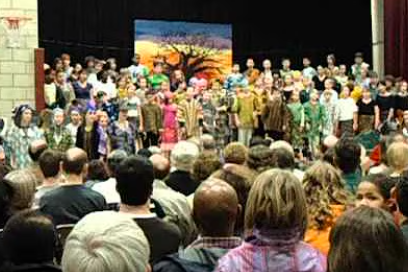
“The Elephant Song” by The Rivingtons, released in the 1960s, is an upbeat, catchy tune that playfully features the elephant as its central figure. The song’s lyrics are whimsical and lighthearted, revolving around the story of an elephant. The chorus highlights the size and majesty of the elephant, painting a fun picture of the animal’s playful yet grand nature. The song, though not deeply serious, was likely inspired by the public’s fascination with elephants as large, impressive creatures that are often seen in zoos or circuses.
Though it may seem like a simple song for children, “The Elephant Song” helped further solidify the elephant’s image as a lovable, memorable figure in popular culture. The quirky, bouncy tune and catchy chorus make it an unforgettable example of how animals can inspire fun, lighthearted music.
11. “Puff the Magic Dragon” by Peter, Paul and Mary

“Puff the Magic Dragon” by Peter, Paul, and Mary is one of the most beloved songs of the 1960s, telling the whimsical story of a magical dragon named Puff. Though often mistaken as a children’s song, it carries deep allegorical meaning. The inspiration for Puff came from a poem by Leonard Lipton and Peter Yarrow. The song chronicles the adventures of Puff and his friendship with a boy named Jackie Paper. While Puff is not based on a specific real-life dragon, the song’s fantasy element, filled with dragons and magical creatures, invokes the imagery of mythical beasts and childhood wonder.
The song, though often interpreted as a story of childhood innocence lost, taps into the symbolic idea of dragons as both protectors and symbols of magic. Puff represents the carefree joy of childhood, with the dragon’s eventual departure mirroring the transition from youth to adulthood. Though it’s a magical creature, Puff’s metaphorical connection to the idea of childhood play and imagination gives the song a lasting emotional resonance for listeners.
12. “Spill the Wine” by Eric Burdon and War
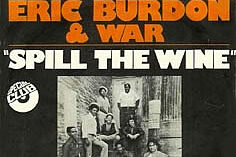
“Spill the Wine,” performed by Eric Burdon and War, is a funky and lively song from 1970 that has become a classic anthem of carefree indulgence and spontaneous fun. The song’s origin is tied to a moment of unexpected chaos during a studio recording session. According to the band, the track’s title and lyrics came about after a wine bottle was accidentally spilled during a party, and the incident sparked a playful and irreverent vibe. The song’s laid-back, jazzy style and the wild energy of the moment reflected the spirit of the times, blending fun and hedonism with a funky groove.
While the song doesn’t directly reference an animal, its exuberant and free-spirited atmosphere brings to mind the carefree nature often associated with wild creatures in their natural habitats. The saxophone riffs and relaxed rhythms evoke the feeling of being in an untamed environment, where life is lived in the moment and boundaries are blurred. The spontaneous, playful vibe of “Spill the Wine” reflects the wild and untethered freedom found in nature, capturing a sense of exuberance that many animals, especially those living freely in the wild, seem to embody.


